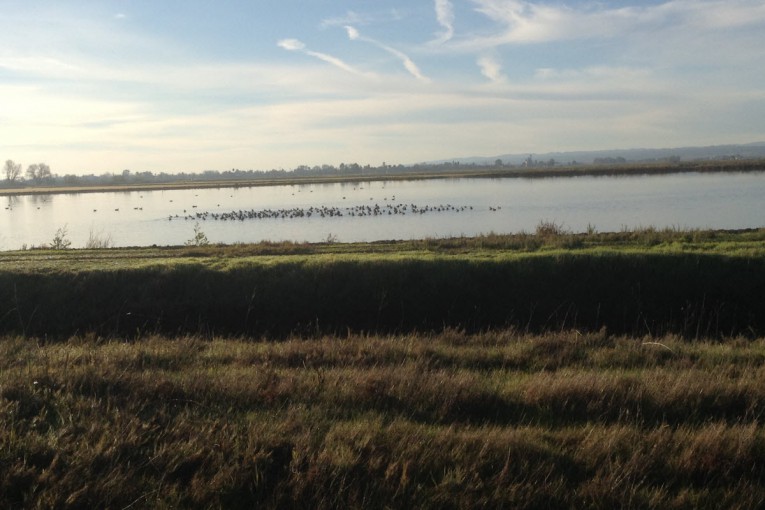

by Debra Chase
“I don’t know what to say about it,
When all your ears have turned away,
But now’s the time to look and look again at what you see,
Is that the way it ought to stay?”
”That’s the Way” by Jimmy Page and Robert Plant
A chill wind hits his face. Forging ahead in his canoe he travels the way his ancestors came before him, long pole in hand he pulls the rice stalks over into the canoe and with the pole hits the rice until he can see the fine grains fall into the bottom of the canoe. Looking around him he sees his brothers and sisters in their canoes doing as he has done, as his ancestors have done for many hundreds of years. Soon the harvest will be complete and the ancient ceremony of thanksgiving can begin.
It is said, over one thousand years ago the Anishinaabe People traveled from their home on the west coast of Turtle Island (North America) to the “place where food grows on water”. The great lakes region became their home and the native wild rice became more than just their food. It is used in their daily lives, ceremonies, and feasts of thanksgiving. The native peoples of America new the benefits of the rice, the cycle of life that the rice grass supported. The ecological importance of this native grass goes beyond providing habitat for a myriad of species; it is the power of water, patience and ultimately, oneness.
A warmer planet may mean less rice for the native peoples of the great lake region and ultimately for the rest of the world. It is showing us that what we do here and there affects the lives of the people there and here. It is reminding us of the great responsibility we have as individuals, as a community, as a people, to care for our great Mother Earth.
Before you go to bed tonight, take about ½ cup of wild rice, and place it in a large mason jar with 4 cups of water. Cover it with a sprouters’ lid or piece of cheesecloth held with a rubber band and let it sit overnight. Next morning, drain off the water into your potted plants or garden. Add clean water to the rice, cover, and let sit all day in a cool spot on your kitchen counter. In the morning and evening drain, rinse and add fresh water again. Do this for two to three more days. Every day as the rice soaks up the water you will watch the process of “blooming”, the rice will open its “petals” and a beautiful pale center will be exposed. After the petals have bloomed drain and rinse one last time. Notice throughout this process how much water you had to use to sprout this small amount of rice. Now think of the vast fields of rice grown here in America and around the world and the amount of water needed for those fields of rice to sprout and grow.
Place the rice in your most beautiful bowl add a dash of olive oil a little apple cider vinegar mixed with some raw honey a diced apple and some thin slices of red onion. Make it your own by adding grated ginger, garlic or chopped fresh herbs. As you enjoy your rice petal salad, reflect on the many generations that have come before you that preserved the rice and kept it safe for you to enjoy today and for many more years to come.
Should a butterfly flap its wings
The wind of worlds will swim and sing
Debra Chase is a self-taught traditional chef with over three decades of professional experience. She currently resides in Colusa County on a small farm.
Debra
Such a beautiful piece.
Thank you.
Thanks so much! Hopefully these articles will help others to understand the importance of water conservation and use.
I second Tia’s comment–beautifully written article!